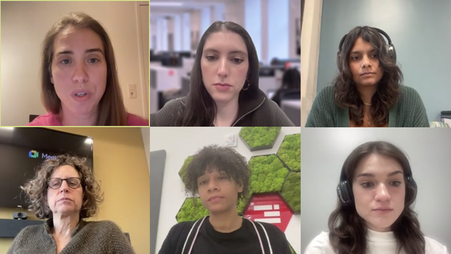This week, James Goodale, former general counsel of the New York Times, is out with a new book called “Fighting for the Press,” which chronicles his role in convincing the New York Times to publish the Pentagon Papers, and then convincing the Supreme Court the Times was protected by the First Amendment.
First, a disclosure: I worked as Mr. Goodale’s researcher and as an editor on the book, and Daniel Ellsberg, who leaked the Pentagon Papers to the New York Times, is a co-founder of Freedom of the Press Foundation.
With that said, the story of how the Pentagon Papers came to be published, as well as the rich history of newspapers publishing government secrets in the public interest, is riveting and serve many important lessons today. In fact, that’s why Goodale wrote the book. He wanted to “apply its lessons to the Obama administration, which continues to pursue leakers and WikiLeaks with unseemly enthusiasm,” he told me this week. “It is a clarion call to journalists to wake up and get Obama to stop.”
More than forty years of national security reporting, from the revelation of the NSA warrantless wiretapping program and CIA secret prisons, to much of today’s reporting on the Obama administration’s secret drone program, could not have been possible without the New York Times taking a stand in the Pentagon Papers case in 1971.
Yet it almost never happened. At the time, Times publisher Arthur Sulzberger was extremely hesitant to run the classified Top Secret Pentagon Papers, fearing he’d be hauled away in handcuffs. Meanwhile, the Times’ influential Vice President Harding Bankcroft lobbied heavily against the idea. Thankfully Goodale’s arguments—that newspapers regularly published government secrets, and this practice fell squarely within First Amendment protected activity—won out. The Times went ahead and published, despite almost certainly knowing they’d be going to war with the Nixon administration in the process.
Two days after the first article on the Pentagon Papers appeared in print, the Times received a telegram from Nixon’s attorney general John Mitchell: either stop publishing the Papers immediately, or Nixon would stop them in court.
Goodale called up Lord, Day and Lord, then one of New York’s most prestigious law firms and the Times’ longtime outside counsel. He told the law firm the Times would need them in court at 10 am the next day. The President was trying to legally censor a newspaper for the first time in American history.
But Lord, Day and Lord refused. Twelve hours before one of the most important First Amendment cases in history would begin, the Times’ lawyers quit, saying they thought the Times was committing a felony by even possessing the Pentagon Papers. Goodale was on his own.
Approaching midnight, Goodale gave a call to a then-unknown attorney named Floyd Abrams. Abrams agreed to help represent the Times, along with famed Yale law professor Alexander Bickel.
Thirteen days, and many twists and turns later, the three found themselves before the Supreme Court.
Though President Obama’s supporters would certainly be aghast at the comparison, Goodale convincingly argues Nixon and Obama’s approach to press freedom has been much the same. Nixon was the first President to charge a whistleblower (Ellsberg) under the Espionage Act. Obama had done so six times—more than all other administrations combined.
One of the most eye-opening chapters in Goodale’s book recounts how Nixon also tried very hard to prosecute the New York Times under the Espionage Act even after the Supreme Court ruled the government could not censor the paper in civil court. While the Supreme Court decision is taught in every law school in America, the grand jury investigation into the Times is a forgotten chapter in history—yet may be just as consequential.
Prosecutors attempted to indict New York Times reporter Neil Sheehan and his wife Susan Sheehan, then a staff writer at the New Yorker for ‘conspiracy to commit espionage.’ The grand jury subpoenaed many of the most famous academics and journalists of the time, including Noam Chomsky, Howard Zinn, and famed New York Times reporter David Halberstam.
In his book, Goodale unearths a previously unpublished statement from Arthur Sulzberger condemning the indictment they all thought was inevitable at the time, but thankfully it never materialized.
It was a near miss, but an indictment could have changed national security reporting forever. More than forty years later, we’re now facing the scenario, as Julian Assange and WikiLeaks are reportedly under grand jury investigation for the exact same ‘conspiracy to commit espionage’ charge.
If WikiLeaks is indicted, every other major paper in the country will face the same risk. Staying silent in the face of this threat could one day cost them their profession. And just like forty years ago, Goodale wants to prevent that.




